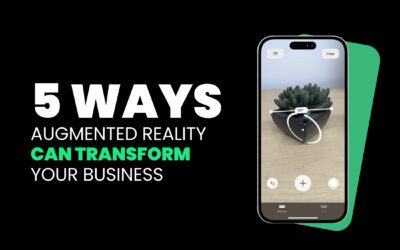For many, when they hear the term “augmented reality” their first thoughts immediately jump towards futuristic, high-tech gadgets that can only be seen in high budget movies. Surely not something that would impact their day-to-day routines. Once upon a time, that notion may have been true with practical uses for AR being few and far between–but times have changed (and definitely for the better!). Whether we realize it or not, AR has found its way into our daily lives in one form or another, and since we could go on and on about augmented reality’s impact, we reluctantly narrowed it down to three major instances to look out for.
Sports Broadcasting
Super Bowl 2020 saw just shy of 100 total million viewers. But whether you’re a Chiefs fan or a Niners fan, any football lover has asked themselves at one point: “How do they keep repainting those first down lines? This is one of the primary examples we provide to those unfamiliar with augmented reality tech. The answer is known as “1st & Ten”, a very early example of AR that inserts lines onto the field as if they were actually there. As previously discussed, the inserted digital lines are seamlessly overlaid atop the football field and do not overlap with physical players in the foreground.
Marking first downs is just the tip of the iceberg when it comes to AR and football — overlaying player information, digitally tracking a player’s route, and several more tech-centered features are becoming the new norm in today’s broadcasts. More importantly, this grants viewers at home access to more game insights than those in the stadium, a welcome tradeoff over $10 hot dogs.
The unveiling of AR technology doesn’t stop at American football. Soccer broadcasts worldwide have since adapted AR as a means of tracking individual players and displaying their relevant stats. Since the vast majority of fans watch games online, broadcasters are now experimenting with new and exciting ways to display info beyond simple charts and scoreboards. Precision-heavy sports like baseball and golf have also used AR to track ball trajectories and provide online viewers with additional information.
Shopping / Retail
Ecommerce shows no signs of slowing down, and big box retailers have taken notice. While brick and mortar shopping isn’t going anywhere anytime soon, recent developments with the coronavirus favor vendors who are attuned to their customers’ digital demands. Augmented reality now serves to address two key buyer concerns at once: commitment and convenience.
As we previously touched on, buyer’s remorse is the scourge of sellers everywhere. The try-before-you-buy aspect is a powerful remedy (think dealership test drives) but wasn’t always feasible for most products/services. However, as more and more people begin shopping online, companies are making AR a part of the ordinary shopping experience.
Thinking about upgrading your living room? Put away the measuring tape and lean back in your seat as you peruse and project entire inventories of furniture from your phone’s camera straight into your home. With a simple swipe, users can switch between sizes, colors, or textures of their choice. Last October, Gravity Jack partnered with Samsung to showcase their latest TV catalog. By removing the hassle of researching, buying, and returning, augmented reality has transformed the retail world for years to come.
AR isn’t limited to mobile apps; your phone camera alone does quite nicely. QR codes have long stood as a means to easily link to specific websites. Pairing nicely with augmented reality’s flexibility, QR codes act as a universal method of displaying AR content. Firms can leverage these convenient squares to link directly to branded pieces of augmented reality without requiring dedicated apps. This allows retailers to deliver immersive shopping experiences via games, selfies, face filters, and more.
Facial Recognition
For those who enjoy carrying the latest gadgets, you may have been using AR without even realizing it. Snapchat used this same marriage to revolutionize selfies in popular culture, detecting faces then overlaying them with all manner of cute filters. Augmented reality allows for continuous tracking, which means that users can scrunch up their faces as much as they want without distorting the filter. In fact, some of Snap’s Lenses rely on users making funny faces to trigger special effects. As augmented reality and facial recognition become more closely tied, visual industries like beauty and fashion will only become more and more immersive.
Given its versatility and accessibility, it’s no wonder AR has found its way into your life in one form or another. Has AR impacted your daily routine unexpectedly? Tell us about it! Have an idea for an AR app that you think should be used every day? We want to hear about that too! Feel free to contact us any time.





